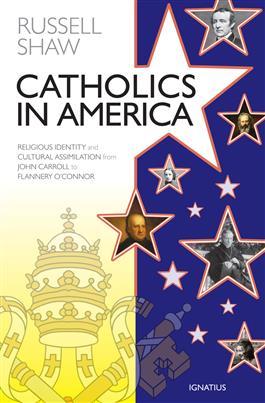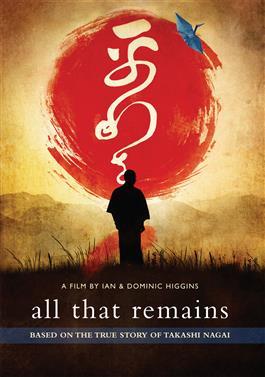Carl E. Olson's Blog, page 14
June 23, 2016
"Catholics in America: A Tale of Two Flags" by Russell Shaw

(Photo: us.fotolia.com/TR)
Catholics in America: A Tale of Two Flags | Russell Shaw | Catholic World Report
Yes, assimilation has been the preferred strategy of Catholic leadership since the days of John Carroll. But should it always be? There is good reason to think it shouldn’t.
In a certain parish church that I know well, as also, I suppose, in many other Catholic churches in the United States, two flags are prominently displayed. One is the Stars and Stripes. The other, unfamiliar to most Americans, including many Catholics, is the gold and white flag of Vatican City, with the papal coat of arms—the keys of Peter and the papal tiara—imposed upon its vertical white band. In many churches the two flags flank the sanctuary as if to salute the sacred ritual celebrated there. In the one I’m thinking of, they hang from the choir loft in benevolent surveillance of the congregation.
In all my years of visiting Catholic churches I’ve never heard anyone, priest or lay person, say a word about the symbolism of the two flags. Perhaps it’s so obvious that it doesn’t need explaining. The message is plainly twofold: first, that Catholics have a dual loyalty—to the Church and to the United States; second, that there is no conflict here. On the contrary, the flags’ answer to the ancient question, “Can you be a good Catholic and a good American?” is a silent “Who says you can’t?”
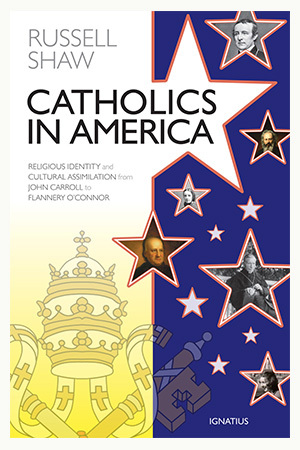
"Catholics in America: Religious Identity and Cultural Assimilation from John Carroll to Flannery O'Connor" by Russell Shaw (Ignatius Press, 2016)
For a long time that was entirely reasonable. It was the necessary starting-point for the Americanization program pursued by Catholic leaders from John Carroll on. Some people had their doubts, of course. In the early years of the twentieth century, for example, the Harvard philosopher George Santayana, a self-described “aesthetic Catholic,” expressed surprise that American Catholics busily assimilating into American culture were so ready to embrace something so “profoundly hostile” to their faith.
But despite the reservations of a few, a letter dispatched to the Vatican a few years later by the princely Cardinal George Mundelein of Chicago offered a candid explanation of why assimilation wasn’t merely desirable but necessary for the Church in America. Responding to an impassioned protest to Rome by Polish priests infuriated by his efforts to prevent Polish members of his Windy City flock from retaining their Catholic-centered old country culture, Mundelein declared it of “the utmost importance” that nationality groups in America “fuse into one homogeneous people…imbued with the one harmonious national thought, sentiment and spirit.” This was “the idea of Americanization,” he told Rome, and anything else instead of it would be “a disaster for the Catholic Church in the United States.”
That remained the conventional wisdom until recently. Now, though, the situation is changing as it becomes clear that the Church needs to rethink the old project of unconditional cultural assimilation. Yes, assimilation has been the preferred strategy of Catholic leadership since the days of John Carroll. But should it always be? There is good reason to think it shouldn’t. Assimilation’s cost to the Church has skyrocketed as the secular culture has become ever more hostile to Catholic beliefs and values on issues from abortion and same-sex marriage to the creeping economic strangulation of parochial schools. The wisdom of assimilation takes on particular urgency now from the presence in the U.S. of yet another large body of mainly Catholic newcomers, the Hispanics.
Three years ago I published a book called American Church examining the problem of assimilation suggested by its subtitle: The Remarkable Rise, Meteoric Fall, and Uncertain Future of Catholicism in America. In laying out my thesis, I said this:
“As a sociological, psychological, and even spiritual process, Americanization was bound to happen. But it did not have to happen just as it did, nor must all the results now be accepted just as they stand….[T]wo linked questions become more and more pressing: How American—in contemporary American secular terms—can Catholics afford to become without compromising their Catholic identity; and must the future of Catholicism in the United States be more Americanization as we’ve experienced it up to now, or do we have other, better options?”
My new book, Catholics in America: Religious Identity and Cultural Assimilation from John Carroll to Flannery O’Connor, seeks to continue the discussion.
June 16, 2016
Coming soon from Ignatius Press: Book-interview with Raymond Leo Cardinal Burke
Available for pre-order:
Hope for the World: To Unite All Things in Christ 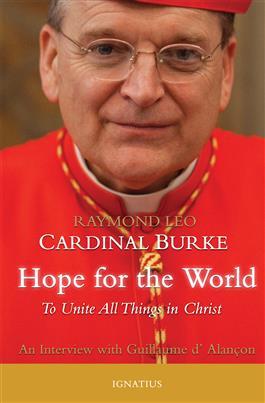
An interview with Raymond Leo Cardinal Burke by Guillaume Alancon
In a thorough and hard-hitting discussion, Cardinal Raymond Burke frankly offers his thoughts and insights on the pressing issues of our times: the role of the Catholic Church in the modern world, the liturgy, spiritual renewal, marriage and family, respect for human life, and more. His deep love for Christ is evident as he recounts his own upbringing in a devout Catholic family, his early priestly years, and his service as a bishop in the United States and Rome
Every topic is approached from the perspective of deep faith and sound reasoning, without polemics. Cardinal Burke, a great canonist with long pastoral experience, treats difficult subjects with clarity and directness. His lucid and straightforward answers help with understanding the essential moral and spiritual challenges of today. They uncover the foundational truths of the natural law, which is written on our hearts.
Guillaume d'Alançon is an episcopal delegate for the family and for life issues of a French diocese, and the author of works in philosophy and spirituality.
Raymond Leo Cardinal Burke was made a Bishop by Pope John Paul II in 1994, and a Cardinal in 2010 by Pope Benedict XVI. He was called to Rome in the same year to become Prefect of the Supreme Tribunal of the Apostolic Signatura. In 2014 Pope Francis named him chaplain to the Order of Malta.
"Want to know the real Cardinal Burke? Here he is in full, a good priest and an accomplished churchman, in love with the Lord Jesus and passionate about the Lord's flock."
— George Weigel, Ethics and Public Policy Center
"This is classic Cardinal Burke: conceptual clarity, courageous and direct expression of the truth, and comprehensive treatment of everything he addresses."
— Robert Royal, Author, A Deeper Vision
"Cardinal Burke reveals his own story, and along the way, he candidly answers challenging questions with clarity and precision. Throughout he is as inspiring as he is fearless."
— Raymond Arroyo, EWTN News Anchor, The World Over
"Cardinal Burke provides a therapeutic analysis of the crisis affecting the Church since Vatican II, and he radiates the perennial hope that is the wellspring of evangelization."
— Fr. George Rutler, Author, He Spoke to Us
"The bedrock solidity of Cardinal Burke's faith shines radiantly in this interview."
— Fr. Donald Haggerty, Author, Contemplative Hunger
June 14, 2016
New: "Catholics in America: Religious Identity and Cultural Assimilation from John Carroll to Flannery O'Connor"
Now available from Ignatius Press:
by Russell Shaw
This is a collection of short, popularly written profiles of some of the leading figures in American Catholic history. The group includes Archbishop John Carroll, St. Elizabeth Ann Seton, Orestes Brownson, Isaac Hecker, Cardinal James Gibbons, Al Smith, Dorothy Day, Cardinal Francis Spellman, John F. Kennedy, and others. Collectively, their story is the story of the building and shaping of the largest religious body in the United States.
But it is also something more. Catholics in America reflects the ongoing, often controversial, effort to work out the Catholic identity for American Catholics in the context of sometimes hostile, sometimes all-too-inviting American secular society.
The book poses a fundamental challenge to the conventional wisdom of Catholic Americanist historiography which takes cultural assimilation for granted. The oldest question in the history of the Catholic Church in the United States may be this: "Is it possible to be a good Catholic and a good American?" Catholics in America documents the variety of answers that have been given to date, and why the question is more timely now than it has ever been before.
History, human interest, and the drama of faith lived out in action come together in these portraits to tell an exciting story that stretches back two hundred years and continues today.
Russell Shaw is a widely published author and journalist who has written over twenty books, including American Church and Nothing to Hide: Secrecy, Communication, and Communion in the Catholic Church. For 18 years, Shaw directed media relations for the National Conference of Catholic Bishops and the United States Catholic Conference. From 1987 to 1997 he oversaw media relations for the Knights of Columbus.
"Intelligence, zeal, fidelity and a sharp critical eye: Russell Shaw excels in each of these qualities. All of his skills combine here. His portraits of 15 key Catholics from our nation's history make for a compelling experience of the tensions that exist between our Christian identity and the powerful appeal of American secular culture. This is a small book with big content. It's offers wonderful help, vividly readable and wise, in understanding the dilemmas and paradoxes of the Catholic Church in the United States."
— Most Reverend Charles J. Chaput, Archbishop of Philadelphia
"Russell Shaw's fifteen great Americans brings into poignant relief the changes in the American society into which it was once thought possible and desirable for Catholics to join as fully pledged citizens. We have here a sober book that allows us, belatedly, to examine our political souls in the light of more eternal things."
— James V. Schall, S. J., Professor Emeritus, Georgetown University
June 13, 2016
Is Patriotism a Virtue?
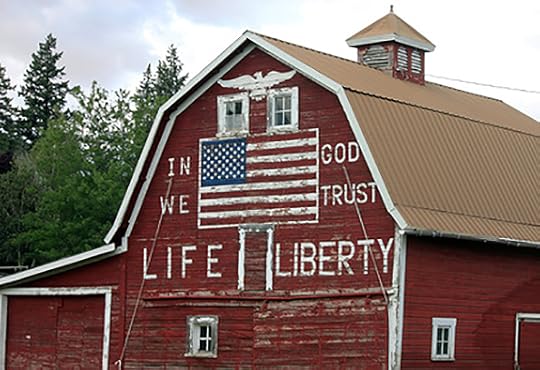
(Photo: us.fotolia.com/egiadone)
Is Patriotism a Virtue? | Jerry Salyer | The Dispatch at Catholic World Report
The fact that so few public figures openly challenge the value of patriotism indicates not a genuine consensus in favor of patriotism, but only that few public figures have given much thought to what patriotism actually is.
Whether they find him persuasive or no, few readers will deny that Alasdair MacIntyre is one of the most significant Catholic philosophers of our time. Titles like Whose Justice? Whose Rationality? and After Virtue have inspired many to further his critiques of the West’s pluralist system, even as others have sought to refute him. While debates about MacIntyre’s work have generally revolved around the role of religion in the public square, there is yet another dimension to his thought which deserves attention. How we respond to three of 21st-century America’s most pressing and controversial issues—immigration, trade, and foreign relations—depends in no small part upon how we regard national identity.
So it behooves us to consider the question MacIntyre poses in the title of his 1984 Findley lecture: Is patriotism a virtue?
The question is not a rhetorical one. The fact that so few public figures openly challenge the value of patriotism indicates not a genuine consensus in favor of patriotism, but only that few public figures have given much thought to what patriotism actually is. As MacIntyre points out, there is an inherent conflict between patriotism and the modern West's liberal democratic ethos. Similar to “marital fidelity, the love of one's own family and kin, friendship, and loyalty to such institutions as schools,” explains MacIntyre, patriotism is “a kind of loyalty to a particular nation which only those possessing that particular nationality can exhibit.” Such personal loyalties are incompatible with the liberal standard of universal neutrality, he explains, because for the liberal,
to judge from a moral standpoint is to judge impersonally. It is to judge as any rational person would judge, independently of his or her interests, affections and social position. And to act morally is to act in accordance with such impersonal judgments. Thus to think and to act morally involve the moral agent in abstracting him or herself from all social particularity and partiality.
If we accept the Enlightenment moral theory upon which liberalism is based, MacIntyre concludes, we must concede that “‘patriotism’ is not merely not the name of a virtue, but must be the name of a vice.” In other words, if the essence of morality lies in impartial detachment and patriotism means giving weight to personal history—to contingencies like “where I was born and what government ruled over the place at that time, who my parents were, who my great-grandparents were and so on”—then the more patriotic we are the less moral we are, and vice versa.
Some have sought to neutralize the conflict between patriotism and Enlightenment morality by redefining the object of the patriot’s commitment—i.e., the nation.
June 12, 2016
Back to the Land, Back to the Lord

Back to the Land, Back to the Lord | Catholic World Report
Property, prosperity, prestige, success, power, popularity—none of this lasts, emphasizes Marcus Grodi, author of Life from Our Land. In fact, they can all be distractions from attaining that which is most important
Marcus Grodi is familiar to many as the host of The Journey Home television series on EWTN and as founder of the Coming Home Network International. A native of Ohio, he studied polymer science at Case Western Reserve University and worked as an engineer before receiving his Master of Divinity degree from Gordon-Conwell Theological Seminary. After more than fifteen years of youth, young adult, and pastoral ministry, he entered the Catholic Church in 1992, along with his wife Marilyn and their two sons, JonMarc and Peter (a third son, Richard, entered through baptism).
The author of several books, including two novels, Grodi's most recent book is Life From Our Land: The Search for a Simpler Life in a Complex World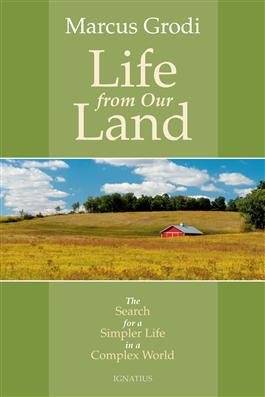 (Ignatius Press). He corresponded recently with Carl E. Olson, editor of Catholic World Report, about his new book and several of the topics addressed in it, including nature, agrarianism, spirituality, stewardship, technology, and life in 21st-century America.
(Ignatius Press). He corresponded recently with Carl E. Olson, editor of Catholic World Report, about his new book and several of the topics addressed in it, including nature, agrarianism, spirituality, stewardship, technology, and life in 21st-century America.
CWR: This is a rather unique book in that it's not easily placed into a settled genre. It has some autobiographical qualities and it discusses various philosophical and practical issues relating to "living off the land", but it is not—as you emphatically state—about how to farm. How would describe the book in a few sentences? What were your main goals in writing it?
Marcus Grodi: Your opening statement says it well, because even when I go into a bookstore, I’m not sure where to look for it! There are elements of Nature, outdoor living, autobiography, economics, agrarianism, Distributism, a little bit of “preaching” and apologetics, but mostly I wanted to discuss rediscovering the most important priorities of the Gospel of Jesus Christ.
There have been many times in history when Christians were claiming that the warnings of 2 Timothy 3:1-5 were surely coming true in their lives! But with one ear to St. Paul’s warning and the other to the evening news, it’s hard to believe there has ever been a time closer to fulfilling these details. All around us are people who seem oblivious to Eternity—and I don’t just mean our neighbors who don’t go to Church. I mean Catholics and non-Catholic Christians who have slowly over time become acclimated to a truncated version of the Gospel.
The ease, availability, and speed of technology, as well as a culture defined by the pursuit and accumulation of wealth, has carried so many of us along on a rollercoaster of supposed progress—and the only time many of us notice how completely our lives have been altered by technology is when we try to do anything “the old fashioned way.” We quickly give up and return rejoicing to the newer, easier, quicker, cheaper way, because the muscles we need to do things “the old fashioned way”, as well as the patience, have all atrophied. And the point of this is that this is also true of our faith—the disciplines, devotions, and service that once were normal have been supplanted by the easier, quicker, and more readily available. And of course, I’m not pointing fingers—this is true of me, too, which is what the book is about.
In this book, I've tried to describe how I came to discover this; how I rediscovered the core of the Gospel of Jesus Christ by tending sheep, cattle, and other livestock; by failing at gardening; by trying to understand what is going on with our culture and economy; by getting a grip on preparing for the future of my family when the day comes that I no longer have an income to pay the bills; by understanding what is happening to my friends and family as they fail to see the need of Christ and his Church — and for some this has meant not coming to see this before passing on to their reward; and to ask myself, with all the opinions out there, how can I know which opinion is true? My goal in writing this book was hopefully to help at least a few more to find their way through the narrow gate.
CWR: Early in the book you write, "I’m a believer! But I’m also a forgetter, and I have come to realize that nature is a great reminder." What are some of the things you are reminded of when in nature? How does our distance from the nitty-gritty of nature—as a culture and nation—affect the way we see, think, and understand reality?
Sinners, Prophets, and the Business of Heaven

"Christ in the House of Simon" by Dieric Bouts (c 1420-1475)
Sinners, Prophets, and the Business of Heaven | Carl E. Olson | On the Readings for Sunday, June 12, 2016
2 Sm 12:7-10, 13
Ps 32:1-2, 5, 7, 11
Gal 2:16, 19-21
Lk 7:36—8:3 or 7:36-50
What did the most famous king in the Old Testament and a poor, anonymous woman in the Gospels have in common? They were both sinners. They were both in need of forgiveness. And they both knew it.
King David’s sin is as well-known as the woman’s sin in today’s Gospel reading is unknown. David, having witnessed the beauty of the wife of Uriah the Hittite, one of David’s loyal warriors, arranged to have Uriah put on the front lines of battle, where he was killed. It was the darkest moment of David’s often magnificent and noble life, and the king finally confessed to the prophet Nathan, “I have sinned against the Lord.” In the Psalm written after Nathan had confronted him about his murderous actions, the repentant David wrote, “Create in me a clean heart, O God, and put a new and right spirit within me. … Deliver me from bloodguilt, O God, O God of my salvation, and my tongue will sing aloud of your deliverance” (Psa. 51:10, 14).
David’s life and sin were chronicled in great detail, by others and by himself. His remorse was expressed with poetic poignancy by his own pen. It is quite a contrast to the sinful woman who came to the house of the Pharisee where Jesus was invited to dine. Her name is not given, her sins are not described or listed, and if she uttered any words, they are not recorded. She may have been a prostitute; whatever the case, her sins were apparently public and well-known.
These various facts and details are not of primary concern to Luke the Evangelist because he is intent on revealing Christ’s mercy, love, and power to forgive sins. “You perceive,” wrote St. Peter Chrysologus about this particular story, “that Christ came to the Pharisee’s table not to be filled with food for the body but to carry on the business of heaven while he was in the flesh.”
A significant amount of this business of heaven was worked out within the earthly context of Jesus’ ongoing debates and confrontations with the Pharisees. The host, the Pharisee Simon, was concerned with judging—was Jesus a true prophet?—which is why Jesus asked him a question that required his judgment as a Pharisee, an interpreter of the Law. Simon, in judging rightly the answer to Jesus’ question, rendered judgment upon his own actions, or lack of actions. The problem was that Simon, like many of the Pharisees, was fixated on the letter of law, while failing to love the Giver of the law.
Put another way, Simon had asked Jesus into his home in order to judge Jesus, while the sinful woman sought out Jesus in order to kiss and anoint his feet. The Pharisee wished to stand face to face with the Incarnate Word in stubborn wariness; the woman desired only to worship at his feet in a silent act of vulnerable love. She did not have to give verbal expression to her sorrow and repentance for her actions spoke louder than words. Her sins, Jesus said, were forgiven “because she has shown great love” and because of her faith: “Your faith has saved you; go in peace.”
We are not saved by faith alone but, as the Apostle Paul told the Galatians, who were being tempted to embrace a form of Pharisaism: “For in Christ Jesus neither circumcision nor uncircumcision is of any avail, but faith working through love” (Gal. 5:6). Faith, James emphasized, is dead without works—and those works are animated by charity and oriented toward God and neighbor (James 2:8-18).
“To err human,” wrote Alexander Pope, “to forgive divine.” That is the essential message of today’s readings, which unflinchingly point out man’s sinful ways while rejoicing in God’s merciful ways. All of us—famous kings and unnamed women and everyone between—are sinners, and Christ died for us so that we, as Paul writes, can be crucified with Christ and thus truly live by faith and love.
(This "Opening the Word" column originally appeared in the June 13, 2010, edition of Our Sunday Visitor newspaper.)
June 9, 2016
"A work of deft apologetics ... [an] admirably argued and consistently instructive book ..."
From Edward Short's review in The Catholic Herald of Carl E. Olson's book Did Jesus Really Rise From the Dead?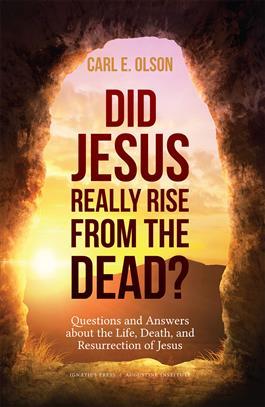 (Ignatius Press-Augustine Institute, 2016):
(Ignatius Press-Augustine Institute, 2016):
Olson is at his best when confuting those like the liberal Protestant theologian John Selby Spong, who claims that the Resurrection must mean something other than that Christ rose from the dead. For Spong, since the Resurrection found in the New Testament and celebrated by Christians worldwide for more than 2,000 years cannot be squared with our technologically advanced, scientific society, it is necessary for obliging liberal theologians to disabuse “fundamentalist” Christians of outmoded views and to offer instead a more plausible “spiritual” definition of Christ’s greatest miracle. And thus, as Olson argues, “Spong and like-minded thinkers … shred and reassemble the New Testament in Frankenstein-like fashion, creating a monster that is part pseudo-spirituality, part slavish scientism”.
Throughout this admirably argued and consistently instructive book, Olson never loses sight of why understanding the Resurrection is so vital.
“Secular humanism simply does not satisfy hungry souls and searching hearts,” he writes. Nor does it tell us anything reliable about Christ, or his Resurrection. When it comes to the atheists who command so much respect in our uncritical culture, Olson is unsparing.
Read the entire review on the Herald's site.
More praise for the book:
"Every year, right around Easter, the super-skeptics come out in droves to call into question the truth of the Resurrection. In Did Jesus Really Rise from the Dead?, Carl Olson does an excellent job of laying out the key questions raised by skeptics and offering compelling and well-researched answers. A must-read for any Catholic whose ever wondered about the historical evidence for the Resurrection of Jesus."
— Dr. Brant Pitre, Author of The Case for Jesus: The Biblical and Historical Evidence for Christ
"Carl Olson offers a cogent survey of the most common objections to the historicity of the Resurrection, doing the particularly invaluable work of tracing their historical roots and philosophical assumptions in an accessible way. This book is an essential resource, especially for teachers, catechists, and anyone involved in evangelization."
— Amy Welborn, author of the Prove It! series of apologetics for Catholic teens
"This is a doubly scandalous book. It's about the greatest scandal in history, the Resurrection of Jesus Christ, and it's a scandal in its own right because it dares to argue (convincingly, I think) that the Resurrection actually occurred and that all the arguments against its historicity have fallen flat, including recent arguments from the New Atheists and others. Did Jesus Really Rise from the Dead? will give delight to believers and distress to unbelievers. What more can one ask?"
- Karl Keating, Founder, Catholic Answers
"'If Christ has not been raised, your faith is worthless ... we are of all men most to be pitied.' So says St. Paul. In his new book Did Jesus Really Rise from the Dead? Carl Olson demonstrates there is no pity necessary—the resurrection is true! He analyzes and presents the historical and objective reality of the bodily resurrection of Jesus Christ, the central and crucial fact of all human existence. Written for novice and scholar alike, this book will convince even the skeptic."
— Steve K. Ray, Best-selling author and Host of "The Footprints of God"
"Conversant with both the relevant scholarship as well as the misconceptions and false presentations of Jesus current in contemporary culture, Olson’s book is an inviting, readable introduction to the question of the resurrection that deepens one’s faith in the fundamental fact of Christian faith—that Jesus Christ was truly raised from the dead."
— Dr. Leroy Huizenga, Associate Professor of Theology, University of Mary (Bismarck, N.D.)
"Scholars are often busy 'rethinking' the Resurrection of Christ only to find, so they tell us, that it never happened, or perhaps that Christ never happened. Carl Olson has read over these various theses and examined their credibility. Not surprisingly, he finds them wanting on this or that particular issue of fact or logic. The Resurrection is at the center of Christianity. Olson's book shows quite clearly why it is and that it is. The scholarship that opposes the Resurrection is seen to be deficient not only in faith but also in reason, in scholarship itself."
— Fr. James V. Schall, S.J., Professor Emeritus, Georgetown University
"For the earliest Christians, to preach Christianity meant primarily to preach the Resurrection. It was the focus of every sermon reported in the book of Acts. It was the heart of the good news which the Christians brought to the world. Yet in some circles today, it has become fashionable not just to doubt the Resurrection, but to question such basic facts as Jesus' very existence. That's why this new book by Carl Olson is so desperately needed. As St. Paul did in the first century, Olson affirms the life-changing power of the Resurrection. But he does more: he shows how the best evidence and contemporary scholarship affirm what Christians have believed for centuries, that Jesus really did rise from the dead. Comprehensive, well-researched, and accessible, this is the best defense of the Resurrection from a Catholic perspective."
— Brandon Vogt, Content Director at Word on Fire Catholic Ministries and founder of StrangeNotion
"Did Jesus Really Rise from the Dead? is a brilliant and lucid presentation of the overwhelming evidence for Christ's resurrection. Like a skilled surgeon, Carl E. Olson masterfully analyzes and dissects the radical skepticism and iniquitous criticism that often dominate the study of the Gospels. The question and answer format allows the reader to follow the arguments in a logical progression, and is a wonderful medium for Olson to showcase his unique talent for keeping the reader interested and engaged while bridging the chasm between academic scholarship and the armchair intellectual. This book should be required reading for every priest, deacon, seminarian, catechist, apologist—anyone who wants to strengthen their Christian faith and deepen their love of Jesus Christ."
— Deacon Harold Burke-Sivers, author, Behold the Man: A Catholic Vision of Male Spirituality
June 8, 2016
There aren’t “two popes” in any way, shape, or form

Pope Francis greets retired Pope Benedict XVI prior to the opening of the Holy Door of St. Peter's Basilica at the Vatican in 2015. (CNS photo/Maurizio Brambatti, EPA)
There aren’t “two popes” in any way, shape, or form | George Weigel | The Dispatch at Catholic World Report
The Petrine Office is not divisible in any fashion, nor can it be a dyarchy in which one exercises the mission of governance and another exercises a mission of prayer.
Life, even Catholic life, is full of ambiguities, but some things either are or aren’t. It’s a ball or a strike. It’s a Toyota or a Ford. You’re baptized or you aren’t.
The papacy would seem to be one of these you-are-or-you-aren’t realities. According to the law of the Church, a man becomes pope the moment he accepts election (assuming he’s a bishop; if not, he becomes pope after he’s immediately ordained to the episcopate). A man ceases to be pope when he dies or when he abdicates the office by a clear and free manifestation of his will to do so. So there are never “two popes.” Whatever else a “pope emeritus” may be, he is emphatically not “the pope.”
Ever since Pope Benedict XVI’s abdication, there have been voices insisting that Pope Benedict didn’t really mean to abdicate, or didn’t do so canonically, or simply laid down the burden of governance while somehow remaining “pope,” or some other such foolishness – and this despite Benedict’s insistence that, yes, he meant to do exactly what he did. To date, these voices have been limited to the woolier fringes of Catholic commentary, where conspiracy theories abound; to academics with too much time on their hands; and to columnists (chiefly Italian) with space to fill. A few weeks ago, however, this entirely unnecessary brouhaha was exacerbated by Benedict’s longtime secretary, Archbishop Georg Gaenswein, now the Prefect of the Papal Household.
In a lecture in Rome, Gaenswein said (according to a report in the National Catholic Register) that Benedict had “left the papal throne” but had not “abandoned [the] ministry” he had accepted “in April 2005,” such that, while there are not “two popes,” there is “de facto” an “expanded” [Petrine] ministry – with an active member [i.e., Pope Francis] and a “contemplative member [i.e. Pope Emeritus Benedict].” That is why, Gaenswein continued, Benedict XVI “has not given up his name or the white cassock,” and why “he has also not retired to a monastery in isolation but stays within the Vatican – as if he has taken only one step to the side to make room for his successor and a new stage in the history of the papacy.”
So, do we have one who is Simon and another who is Peter?
June 6, 2016
New: "All That Remains", the inspiring film about a Nagasaki Atomic bomb survivor and Catholic convert
Now available from Ignatius Press:
Produced by Ian and Dominic Higgins, makers of the acclaimed Fatima film, The 13th Day, this movie tells the inspiring life story of Nagasaki Atomic bomb survivor and Catholic convert, Dr. Takashi Nagai. A rich, stylistic blend of live action, CGI and archive footage, All That Remains brings to life the amazing story of a forgotten hero in the West—but deeply beloved in Japan—and a pivotal moment in history for a new generation, and takes the viewer on a visceral journey of discovery and revelations.
Nagai, a descendent of a Samurai family, a patriot and a pioneering scientist embarks upon a quest for the "ultimate truth"—the meaning to life and death. It is a journey that starts at his mother's deathbed, and leads him to discover the "hidden Christians" of Nagasaki and meet Midori, the woman whom will finally transform a skeptical man of intellect, into a man of the heart and faith. As Takashi struggles with his new faith, storm clouds gather in Japan as militarists take control of the government, and drag Japan into a long, bloody war with China.
When Japan declares war on England and America, Takashi is convinced that X-ray technology will be in high demand and absorbs himself in his work, risking his health and neglecting his family. But everything changes in a blinding flash, as the atomic bomb is detonated over Nagasaki. Midori is one of the 80,000 souls killed instantly. Takashi, now battling leukemia, left alone to raise their two young children, turns to God for help, and is inspired to rebuild Nagasaki from the rubble and ash. Becoming increasingly bedridden, he begins to write about his experiences. It is through his profound words as a revered man of peace, that a country defeated and demoralized by war re-discovers the healing of power of love.
This DVD contains the following languages: English audio with English or Spanish subtitles.
Special Features:
Documentary film - The Story of Dr. Takashi Nagai: Told by Fr. Paul Glynn, SM
Animated Short Film - The 26 Martyrs of Nagasaki
16-page color Collector's Booklet
June 2, 2016
New from Ignatius Press: Definitive biography of the family of Saint Therese of Lisieux
Definitive biography of the family of Saint Therese of Lisieux and her parents, new canonized Saints Louis and Zelie
San Francisco, June 2, 2016 – The recent, and unprecedented, canonization by Pope Francis of a husband and wife, Louis and Zelie Martin, the parents of their very famous daughter, St. Therese of Lisieux, has stirred a great interest in this extraordinary family. This book, A FAMILY OF SAINTS: The Martins of Lisieux – Saints Therese, Louis, and Zelie , by the highly regarded biographical writer and expert on the Martin family, Fr. Stephane-Joseph Piat, is the definitive biography of the amazing “family of saints”.
, by the highly regarded biographical writer and expert on the Martin family, Fr. Stephane-Joseph Piat, is the definitive biography of the amazing “family of saints”.
St. Therese of Lisieux, a Doctor of the Church, wrote in her classic spiritual biography, Story of a Soul, how important her family life was in setting the foundation for her spiritual life. She grew up in a close family where the deep love of parents and children for God, neighbor and each other was the very heart of the home and family life.
St. Therese herself said, “God gave me a father and mother more worthy of heaven than of earth.” This inspiring book begins with a detailed account of the lives of Louis and Zelie, which describes their personal holiness, love for God and vocation to married life.
This is the story of a modern family of saints, who lived in the late 1800s and early 1900s, a family that seems on the outside to have had a relatively serene life and a smooth path to sainthood. But, as this book shows, the reality is quite the opposite. They suffered the deaths of four children, almost lost a fifth in Therese, had financial challenges, and lost the mother, Zelie, at only 45 years old to breast cancer.
The secret to their happiness and success was that deep family love and boundless faith in God. The Martin parents lavished the love they had for each other on to their children. All the challenges they faced, great and small, were endured with this strong love, and a profound trust in Divine Providence.
This powerful story of a husband, wife and five daughters who overcame many troubles in life is a shining example for all families today in attaining true happiness by putting the love of God and each other at the center of family life. This book is illustrated with many wonderful family photos.
George Weigel writes in the Afterword, “For the first time in two millennia, an entry in the liturgical books will now read, ‘Saints Louis and Zelie Martin, Spouses’. A married couple, a man and a woman, a dad and a mom, who were the parents of a saint, the Little Flower, and in whose married life mutual sanctification took place by cooperation with God’s grace. . . Summoning us to lives of heroic virtue, asking us to be the saints we – like Saints Louis and Zelie Martin – were baptized to be.”
About the Author:
Fr. Stephane-Joseph Piat, O.F.M., a French priest and author of the early twentieth century. In addition to A Family of Saints, he wrote other spiritual and biographic works, including Celine, the biography of the sister of St. Therese.
Anthony Ryan, the Marketing Director for Ignatius Press, is available for interviews about this book.
To request a review copy or an interview with Anthony Ryan, please contact: Rose Trabbic, Publicist, Ignatius Press at (239) 867-4180 or rose@ignatius.com
Product Facts:
Title: A FAMILY OF SAINTS
The Martins of Lisieux – Saints Therese, Louis, and Zelie
Author: Fr. Stephane-Joseph Piat
Release Date: May 2016
Length: 392 pages
Price: $22.95
ISBN: 978-1-62164-079-0 • Sewn Softcover
Order: 1-800-651-1531 • www.ignatius.com
Carl E. Olson's Blog
- Carl E. Olson's profile
- 20 followers


